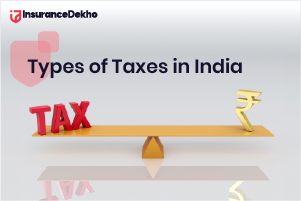Best Investment Plans for 3 Years in India
Updated On Feb 09, 2024
As we step into 2024, the investment in India presents a myriad of opportunities, especially for those looking at short-term investment horizons of around 3 years. Whether you're saving for a near-future goal or just looking to grow your wealth over a shorter period, choosing the right investment plan is crucial. This guide aims to shed light on the top 10 investment options for a 3-year period in India, tailored to suit various risk appetites and financial objectives.
Table of Contents
What are Short-Term Investment Plans?
Short-term investment plans are financial instruments or strategies designed to offer returns over a relatively brief period, typically ranging from a few months to about three years. These plans are ideal for investors who have immediate financial goals or those who prefer not to lock in their money for an extended period. Let’s understand their characteristics:
Characteristics of Short-Term Investment Plans
- Quick Maturity: Short-term investments typically mature within three years, making them suitable for immediate goals like funding a vacation, education fees, or a down payment for a house.
- Liquidity: These investments usually offer higher liquidity, meaning you can convert them into cash without significant loss in value.
- Lower Risk: Compared to long-term investments, short-term plans often involve lower risk. However, this also means the returns might be relatively modest.
- Diversification: They allow investors to diversify their portfolios, balancing out the risks associated with long-term investments.
- Flexibility: Short-term investments offer the flexibility to switch between different options based on changing financial needs or market conditions.
In the following sections, we’ll explore the best investment options for a 3-year period in India, helping you align your investment strategy with your financial horizon and goals.
Best Short-Term Investment Plans
|
Investment Plan |
Risk Level |
Liquidity |
Potential Returns |
Benefits |
Fixed Deposits |
Low |
Moderate to High |
Moderate |
Safety of capital, fixed interest, short-term commitment. |
Savings Account |
Low |
High |
Low |
High liquidity, easy access to funds, low risk. |
Liquid Mutual Funds |
Low to Moderate |
High |
Low to Moderate |
Professional management, liquidity, potential returns. |
Short-Term Debt Funds |
Low to Moderate |
High |
Moderate |
Diversification, potentially higher returns than savings. |
Certificate of Deposit (CD) |
Low |
Moderate to High |
Moderate |
Fixed interest, short tenure, low risk. |
Treasury Bills (T-Bills) |
Low |
High |
Low |
Government-backed, very short-term, low risk. |
Corporate Bonds |
Moderate |
Moderate to High |
Moderate to High |
Fixed interest, potential for capital gains, diversification. |
Money Market Funds |
Low to Moderate |
High |
Low to Moderate |
Safety of principal, liquidity, potential returns. |
Short-Term Post Office Schemes |
Low to Moderate |
Moderate to High |
Moderate to High |
Government-backed, fixed interest, short-term commitment. |
Flexi Fixed Deposits |
Low |
Moderate to High |
Moderate |
Flexible deposit and withdrawal, fixed interest. |
How Do Short-Term Investments Work?
Short-term investments are financial instruments that are designed to provide returns in a relatively short period, typically ranging from a few months up to 3 years. These investments are particularly favoured by individuals who have immediate financial goals or who prefer not to commit their funds for an extended duration. Understanding how these investments work is key to making informed decisions.
Nature of Short-Term Investments
- Liquidity: One of the defining features of short-term investments is their liquidity. They can be easily converted to cash or have maturities that align with the investor's short-term goals.
- Lower Risk Profile: Generally, short-term investments carry a lower risk compared to long-term investments. This is because the shorter duration reduces the exposure to market fluctuations and economic cycles.
- Fixed Income: Many short-term investments like fixed deposits, treasury bills, and certain debt instruments offer fixed returns. The investor knows in advance what they will earn from the investment.
- Market-Linked Returns: Some short-term investments, like certain mutual funds or stocks, offer returns that are linked to market performance. These can offer higher returns but also come with higher risk.
How They Work
- Investment and Maturity Period: Investors put their money into an instrument for a predefined period. The investment matures within the short-term period, post which the principal and earned interest or returns are returned to the investor.
- Interest or Return Generation: Depending on the type of instrument, interest may be accumulated and paid at maturity, or periodic payments may be made. In market-linked investments, the returns depend on the performance of the underlying assets.
- Reinvestment Options: Often, at the end of the investment period, investors have the option to reinvest or withdraw their funds. This flexibility is beneficial for managing short-term financial needs.
- Risk Management: Short-term investments typically involve strategies to minimise risk, focusing on capital preservation and liquidity over high returns.
Suitability
- Meeting Near-Term Goals: Ideal for individuals with upcoming financial needs like funding education, a major purchase, or building an emergency fund.
- Risk Management: Suitable for investors who are risk-averse or for those who need to keep their capital relatively safe and accessible.
Short-term investments work by providing a blend of safety, liquidity, and moderate returns, catering to the needs of investors who are looking at achieving financial goals in the near future or who require quick access to their funds.
Requirements for Short Term Investments
When considering short-term investments, especially for a 3-year period, certain requirements and considerations are essential to ensure that these investments align with your financial goals and risk tolerance. Here’s what you need to consider:
1. Defining Investment Goals
- Clear Objectives: Identify specific short-term financial goals, such as saving for a vacation, an upcoming major expense, or building an emergency fund.
- Time Horizon: Ensure that the maturity of the investment aligns with when you will need the funds.
2. Understanding Risk Tolerance
- Risk Assessment: Evaluate your risk appetite. Short-term investments typically carry lower risk, but this can vary based on the type of instrument chosen.
- Capital Preservation: For short-term investments, preserving the principal is often more important than high returns.
3. Liquidity Needs
- Easy Access to Funds: Consider how quickly and easily you can convert the investment into cash, especially if you might need to access the funds unexpectedly.
- Flexibility: Look for investments that allow you to withdraw without significant penalties or loss of interest.
4. Research and Due Diligence
- Understand the Investment: Research different short-term investment options to understand their features, benefits, and risks.
- Compare Rates and Terms: Assess interest rates, maturity terms, and other conditions across various financial institutions.
5. Diversification
- Spread the Risk: Diversify your short-term investments across different instruments to mitigate risk.
- Balance with Long-Term Investments: Consider how your short-term investments fit into your broader investment portfolio.
6. Monitoring and Review
- Regular Review: Keep track of your investments and market conditions, as economic changes can impact short-term interest rates and investment returns.
- Adjustment Strategy: Be prepared to adjust your investment strategy if your financial situation or goals change.
7. Financial Planning
- Integrate with Overall Financial Plan: Ensure your short-term investments are part of a comprehensive financial plan that includes long-term investments, insurance, and retirement planning.
- Seek Professional Advice: If uncertain, consult with a financial advisor to help you choose the right short-term investment options based on your specific needs.
Understanding these requirements is crucial in selecting the right short-term investment options. The focus should be on aligning the investment with your financial objectives, risk tolerance, and liquidity needs.
Conclusion
When it comes to choosing the best investment plan for a 3-year period, it's crucial to balance your financial goals with your risk appetite and liquidity needs. From safe options like Fixed Deposits and Post-Office Time Deposits to more dynamic choices like Large Cap Mutual Funds or even dabbling in the stock market, the key is to tailor your investment choices to your personal financial aspects. Remember, short-term investments are not just about capital preservation but also about making informed and strategic decisions to grow your wealth in a relatively short period. By understanding the various available options and aligning them with your financial objectives, you can maximise the potential of your investments in a 3-year time frame.
FAQs
- What are some safe short-term investment options?
Fixed Deposits, Post-Office Time Deposits, and Treasury Securities are considered safe short-term investment options.
- Can I invest in mutual funds for a 3-year period?
Yes, short-term debt funds or large-cap equity funds can be suitable for a 3-year investment horizon.
- Are stocks a good option for short-term investing?
Stocks can offer high returns but come with higher risk. For a 3-year term, it’s essential to carefully select stocks or consider diversified equity funds.
- How do short-term investments differ from long-term investments?
Short-term investments typically focus on capital preservation and liquidity, while long-term investments aim for higher returns over an extended period.
- Is gold a good short-term investment?
Gold can be a part of a diversified short-term portfolio, especially as a hedge against market volatility.
- What are the risks of investing in NCDs for a short term?
The risks include credit risk of the issuing company and interest rate risk, which can affect the returns.
- Are corporate deposits safe for short-term investment?
Corporate deposits offer higher returns but carry a higher risk compared to government-backed securities.
- Can I consider ULIPs for a 3-year investment?
ULIPs usually have a longer horizon and may not be ideal for a 3-year term due to their lock-in periods and cost structure.
- How important is liquidity in short-term investments?
Liquidity is crucial in short-term investments, as it allows for quick access to funds when needed.
- Should I consult a financial advisor for short-term investments?
Consulting a financial advisor is advisable, especially if you're new to investing or uncertain about the best options for your financial goals and risk profile.



























